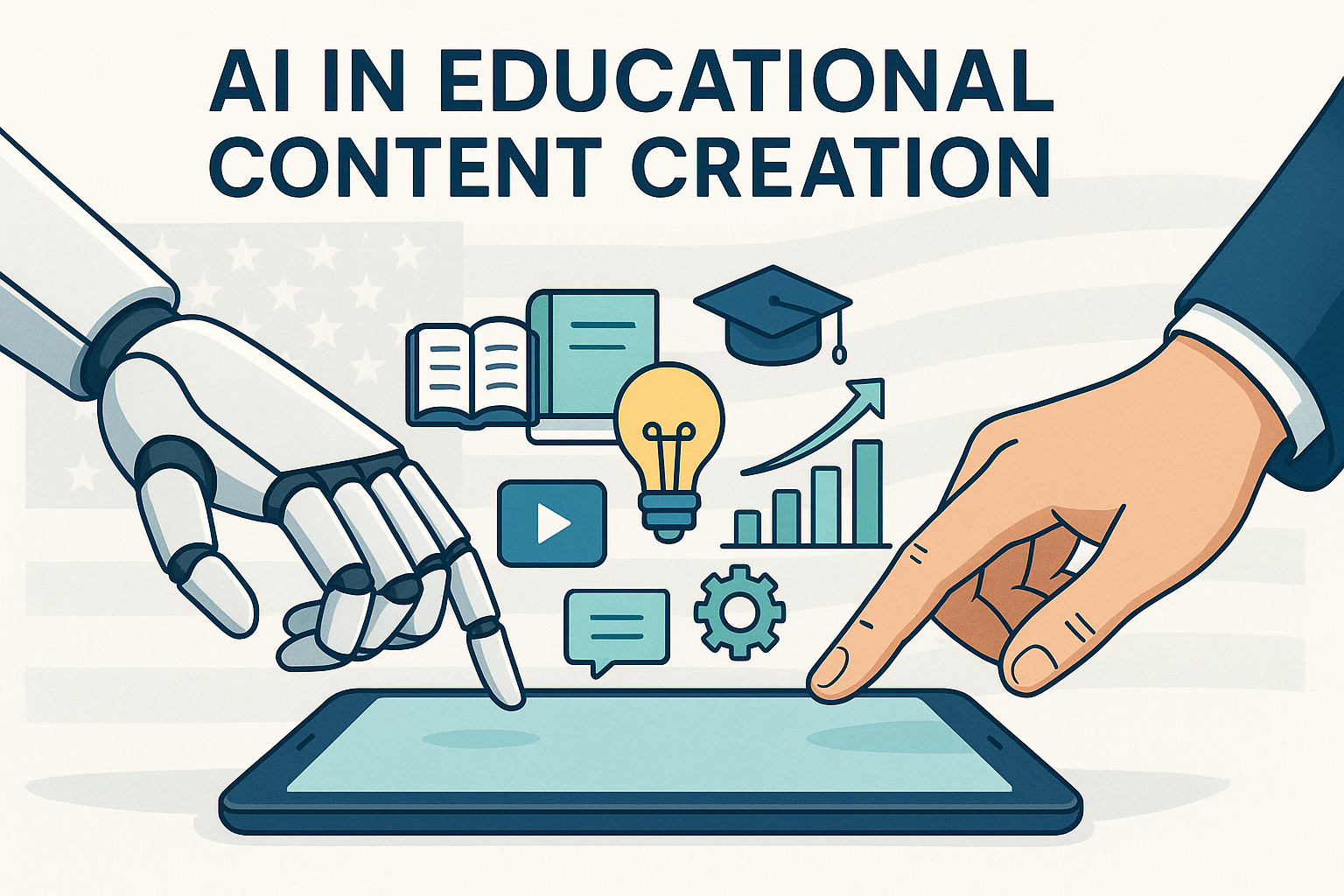
AI in Educational Content Creation: Transforming Learning in 2025
Artificial Intelligence (AI) is revolutionizing the way educational content is created, delivered, and personalized. In 2025, AI in educational content creation is not just a trend—it’s a fundamental shift that empowers educators, content developers, and learners across the United States. This comprehensive guide explores how AI is shaping educational content, the top tools available, practical applications, and what the future holds for AI-driven learning.
Understanding AI in Educational Content Creation
AI in educational content creation refers to the use of artificial intelligence technologies to automate, enhance, and personalize the development of learning materials. These technologies include natural language processing (NLP), machine learning, and generative AI models that can create text, quizzes, videos, and interactive modules.
Key Benefits of AI for Educational Content
- 📚 Personalization: AI tailors content to individual learning styles and paces.
- ⏱️ Efficiency: Automates repetitive tasks, freeing educators to focus on teaching.
- 🏆 Quality: Ensures consistency and accuracy in educational materials.
- 🌎 Accessibility: Makes learning resources more inclusive and adaptable.
Top 10 AI Tools for Educational Content Creation in 2025
Choosing the right AI tool can make a significant difference in the quality and effectiveness of educational content. Here are the top 10 AI-powered platforms making waves in the U.S. education sector this year:
- ChatGPT Edu
- Khanmigo by Khan Academy
- Quizlet AI
- Socratic by Google
- Duolingo Max
- ScribeSense
- Content Technologies, Inc.
- Century Tech
- Jasper for Education
- Canva Magic Write
Side-by-Side Comparison Table
| Rank | Tool Name | Best For | Key AI Feature | Pricing Model |
|---|---|---|---|---|
| 1 | ChatGPT Edu | Custom content generation | Conversational AI | Subscription |
| 2 | Khanmigo | Interactive tutoring | Adaptive learning | Freemium |
| 3 | Quizlet AI | Study aids & flashcards | Smart quiz generation | Freemium |
| 4 | Socratic | Homework help | Visual explanation | Free |
| 5 | Duolingo Max | Language learning | AI conversation partner | Subscription |
| 6 | ScribeSense | Assessment grading | Automated scoring | Enterprise |
| 7 | Content Technologies | Custom textbooks | AI content assembly | Enterprise |
| 8 | Century Tech | K-12 adaptive learning | Data-driven personalization | Subscription |
| 9 | Jasper for Education | Writing assistance | AI copywriting | Subscription |
| 10 | Canva Magic Write | Visual content creation | AI text-to-design | Freemium |
TIP: When selecting an AI tool, consider your institution’s specific needs, budget, and the type of content you wish to create.
How AI Is Used in Educational Content Creation
AI is not just about automating tasks—it’s about enhancing the learning experience. Here’s how AI is making a difference in educational content creation in 2025:
1. Automated Content Generation
AI models can generate lesson plans, quizzes, summaries, and even full textbooks based on curriculum standards.
Example:
Prompt: "Create a 5-question quiz on the American Revolution for 8th graders."
AI Output: [Generates quiz with questions, multiple-choice answers, and explanations.]
2. Adaptive Learning Paths
AI analyzes student performance and adapts content difficulty and format in real-time, ensuring optimal learning outcomes.
3. Multimodal Content Creation
AI tools can convert text into engaging videos, interactive simulations, or infographics, catering to diverse learning preferences.
4. Language Translation and Accessibility
AI-powered translation and text-to-speech make educational materials accessible to non-native English speakers and students with disabilities.
5. Plagiarism Detection and Quality Assurance
AI scans content for originality and checks for factual accuracy, maintaining high educational standards.
TIP: Use AI to create differentiated content for students at various proficiency levels, ensuring no learner is left behind.
Challenges and Considerations for AI in Educational Content Creation
While AI offers immense benefits, it also presents unique challenges:
- 🔒 Data Privacy: Protecting student data is paramount.
- 🤖 Bias in AI Models: Ensuring AI-generated content is fair and unbiased.
- 🧑🏫 Teacher Involvement: AI should augment, not replace, human educators.
- 🛠️ Technical Integration: Seamless integration with existing Learning Management Systems (LMS).
TIP: Regularly review and audit AI-generated content to ensure it aligns with educational goals and ethical standards.
The Future of AI in Educational Content Creation
Looking ahead to 2025 and beyond, AI will continue to evolve, offering even more sophisticated tools for educators and learners:
- Hyper-Personalization: AI will deliver truly individualized learning experiences.
- Real-Time Feedback: Instant assessment and feedback loops will become standard.
- Collaborative AI: Teachers and AI will co-create content, blending expertise and efficiency.
- Lifelong Learning: AI will support continuous education beyond traditional classrooms.
Conclusion
AI in educational content creation is transforming the U.S. education landscape in 2025. From automating lesson planning to personalizing learning paths and enhancing accessibility, AI empowers educators to deliver high-quality, engaging, and inclusive content. While challenges like data privacy and bias remain, the benefits far outweigh the risks when AI is used thoughtfully and ethically.
As AI technologies continue to advance, educators, institutions, and content creators who embrace these tools will be better positioned to meet the diverse needs of learners and prepare them for a rapidly changing world. The future of education is here—and AI is at its core. ✅